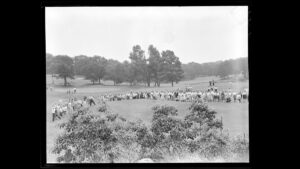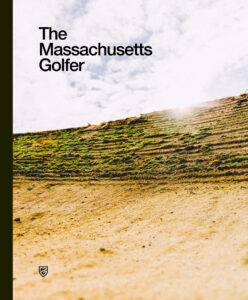
This story was originally printed in Volume I of The Massachusetts Golfer, which was published in April 2024. The Massachusetts Golfer is a print publication, first and foremost, which is exclusively available, at no charge, to Mass Golf Members.
If you are a member and have not received a mailed copy (note that copies are limited to one per household), please update your address on file. Kindly direct any enquiries to Stephen Hanjack: shanjack@massgolf.org
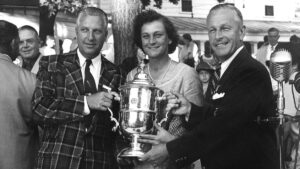
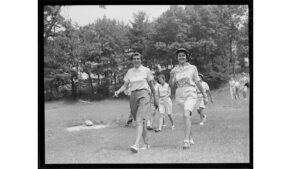
For years and years, a dinner invitation in the form of a metal canister sat on Pippy’s shelf, always in plain view. A sticker on the canister detailed the evening’s programming, hosted by the USGA. It described a “Dinner of Champions” honoring the late Mildred “Babe” Didrikson Zaharias, to be held on the 30th anniversary of her U.S. Women’s Open win at Salem Country Club in 1954.
“Special Guests,” it continued, “will include Contestants in the 1954 U.S. Women’s Open.”
Now, Pippy Rooney O’Connor played in that U.S. Open. And while an amateur earning a spot in the field is no small feat, she wasn’t exactly the type to take heart in the honor of simply participating. Pippy had a whole shelf full of trophies, the kind they give out for winning golf tournaments.
Why then, did she hold on to this commemorative invitation, displaying it as though it signified something more? Like it was a totem of victory.
Perhaps it was. Sure, when Pippy glanced at the canister, she read “Mildred ‘Babe’ Didrikson Zaharias” and “Salem Country Club” clear as day. But maybe the rest of the text melted out of focus. It wasn’t the point.
You see, there’s an old story around Charles River Country Club, Pippy’s former stomping grounds, that suggests there was another competition at Salem around that time.
Pippy vs. Babe.
Two mononymously named women with little else in common, save for their elite talent on the golf course, squared off in a match. The unthinkable happened. The local hero felled Goliath.
It’s the type of country club folklore that seems almost too good to be true.
Did Pippy Rooney, a schoolteacher and an amateur golfer, a very fine amateur golfer, but an amateur golfer nonetheless, really take down the most famous female athlete in the history of sport?
And if she did, was it like they say? That Pippy beat her so soundly that Babe stormed off the course just a few holes into the back nine?
X
Let’s start with what we know for sure.
Pippy Rooney was born in 1930 and raised in Jamaica Plain, Massachusetts. She grew up playing at Hatherly Country Club and displayed a knack for the game early on, making a name for herself with a win at the Women’s Golf Association of Massachusetts Junior Championship in 1947.
Babe was born Mildred Ella Didrikson in 1911, and grew up in East Texas, which may as well have been a different planet than the one Pippy was raised on. Didrikson was one of seven children born to Norwegian immigrant parents. She was driven by her competitive spirit, excelling in a variety of sports, but she was also deeply motivated to escape poverty. Food was sometimes scarce, and resources limited. “I can remember them hamburger days,” said Babe, “where I go now I gotta have mink.”
Babe burst onto the national sports scene at the 1932 Olympic Games in Los Angeles, where she set four world records, won gold in the 80-meter hurdles and javelin throw and took silver in the high jump. Her accomplishments ran the gamut from track and field to harmonica; the sheer variety and seemingly hyperbolic retellings of her life elevated Babe to something approaching a mythical figure.
“Practically every sports fan in America could recite the highlights of Babe’s resume: how she could run fast and far and jump high and long. They knew she could throw a nasty curveball and smash a baseball into the next county. They knew she was an all-American basketball player, outfoxing defenders with quickness and guile, head fakes and stutter steps. She could swim with speed and endurance, scamper across a gridiron wearing pads and a helmet and outhit and outwit the sharpest billiards hustlers,” wrote Dan Van Natta Jr.
She set her sights on golf around 1934 and quickly became a formidable presence in the women’s game, not to mention at a few men’s events. The pro circuit provided a perfect opportunity for Babe to satisfy her insatiable appetite to both compete and entertain. As she did in seemingly every athletic endeavor she attempted, Babe thrived.
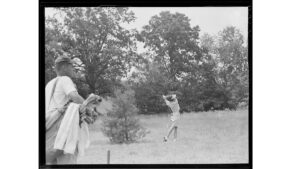
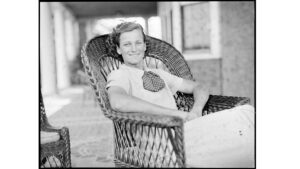
She won the 1946 U.S. Women’s Amateur at Southern Hills, capped off with an 11 & 9 trouncing in the finals. She then won the U.S. Women’s Open two years later at Atlantic City Country Club by eight strokes. Footage from the event reveals Babe to be a gallery favorite, ever the show-woman, plenty comfortable in the spotlight. She struck again two years later, claiming the 1950 title at Rolling Hills Country Club by nine shots.
When Babe made her way up to Salem Country Club for the 1954 U.S. Women’s Open, she had established herself as one of the best female golfers in the history of the sport. With a devastating battle with cancer already underway, her legend may well have reached its summit.
Although she was a number of years younger, Pippy’s game was rounding into form right around the same time. After graduating from the Bouve-Boston School of Physical Education at Tufts University in 1952, she tested her skills on the state level while embarking on a career as a physical education teacher.
It wasn’t a lack of ability that kept her from competing on the national stage. Asked about his fellow Massachusetts golfer, Francis Ouimet said, “She’s on her way to become one of the country’s great golfers. Pippy has every shot in the bag necessary.” A 1953 article in the Quincy Patriot Ledger posited, “The number of qualified observers who have predicted Pippy may eventually be a golfer of the Patty Berg – Louise Suggs – Babe Zaharias category is legion.”
Babe became a founding member of the LPGA Tour in 1950. One would imagine that Pippy was tempted to have a go at it as well, but she was resolutely committed to her teaching career. “The main reason why I’m not seriously interested in being a professional is my job. It wouldn’t be fair to my parents, who sent me to school for four years, to throw that schooling away. Now that I’m started in physical education I’m going to stick with it.”
Due to an unfortunate and bizarre technicality, she was unable to merge her passion for teaching with a professional golf career. “I’d like to teach it, all of us would. And lots of girls would like to learn the game at our schools. But there is a United States Golf Association rule that prohibits phys-ed instructors from teaching golf. That blocks any chance I might have of professional golf with my job and restricts my golfing future to off-season competition I’d say.”
Pippy made her mark on the Massachusetts golf scene right out of school, winning the Women’s Four-Ball with Mary Gleason in 1952 (Charles River CC) and 1954 (Belmont CC), the 1953 Women’s Stroke Play Championship for the Baker Trophy (Dedham Country and Polo Club), and back-to-back Mid-Amateur Championships in 1953 (Concord CC) and 1954 (Brae Burn CC).
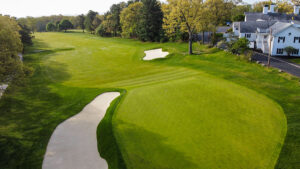
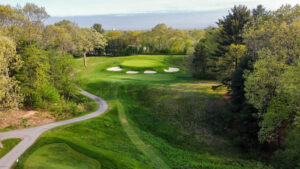
By the time the 1954 U.S. Women’s Open at Salem rolled around, Pippy’s winning ways left some supporters and journalists entertaining the possibility of a Ouimet-esque miracle. Dorothy Kirby said of Pippy, “The way she hit the ball was amazing. She’s the longest I’ve ever played, with the possible exception of Babe Zaharias.”
The comparisons did not stop there. A reporter for The Daily Item wrote, “The Babe? Rooney now had reason to believe she could compete with the best, even the Babe.”
While Pippy wasn’t the story of that tournament, Babe surely was. Just 15 months after undergoing surgery for colon cancer, she became the oldest player to win the U.S. Women’s Open, and she did it by 12 strokes, all while tethered to a colostomy bag. It stands as one of the most inspiring performances in the history of the game.
Ever the ferocious competitor, Babe said after, “I just told the Lord to let me play again, and I’d take care of the winning. Today, we sealed the bargain.”
X
So here we are, with Babe on top of the sporting world, her incomparable legacy cemented, and Pippy playing the best golf of her life.
We know for sure that Babe and Pippy’s paths crossed again the next year, when the two competed at the 1955 Titleholders Championship, formerly an annual LPGA Major Championship at Augusta Country Club. Pippy would win the Massachusetts Women’s Amateur Championship a few months after that, at Pine Brook Country Club.
Perhaps somewhere in those intervening months, the two found time for a match. Maybe Babe, eternally driven by competitive fire, took exception to the suggestion that a local amateur could match her prodigious distance off the tee.
She was also known to enjoy exhibition matches, relishing the opportunity to ham it up with an intimate gallery. In his book Sensation at Salem, Gary Larrabee wrote: “She was the Cassius Clay-turned-Muhammad Ali of women’s golf, brash as they came and the people’s favorite wherever she went because of her outgoing personality, her mild conceit notwithstanding.”
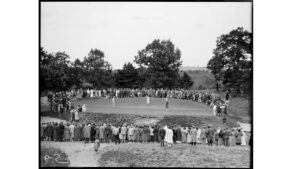
Pippy would spend the rest of her life giving back to the game, teaching and mentoring countless young golfers on the range at Charles River. But you’d
have to think, for all her success in state championships, she would have jumped at the opportunity to test her mettle against one of the best players in the history of the game.
Maybe, just maybe, when Pippy glanced at that USGA canister, it induced a little glimmer in her eye. It left her reflecting on the day that she proved to herself, if not the rest of the world, that she could go toe-to-toe with the greatest female athlete who ever lived.
Maybe she was able to reconcile setting aside her playing aspirations and committing to teaching as her true vocation because she didn’t have to wonder if she could play with the best, she knew she could. But she also knew she could impact more lives in gymnasiums and on practice tees.
The 12th at Salem is a short, heavily bunkered par-3 that runs alongside the tree-lined parking lot. In match play, if you’re battling to stave off defeat that early into the back nine, resignation often settles in. It’s not hard to imagine that Babe, no longer in the mood to be affable with the gallery and not keen on retreating to the clubhouse for social niceties, found herself drawn to an escape route.
And so, might we consider the possibility that the legend proceeded to disappear through the trees, leaving Pippy, a conquering hero, basking in victory amongst a stunned crowd that had witnessed history—just not the kind that’s printed in books or etched on trophies.
![]()
